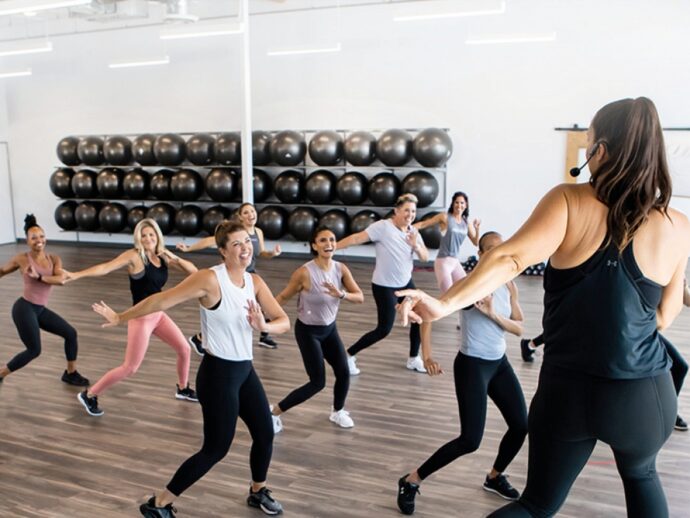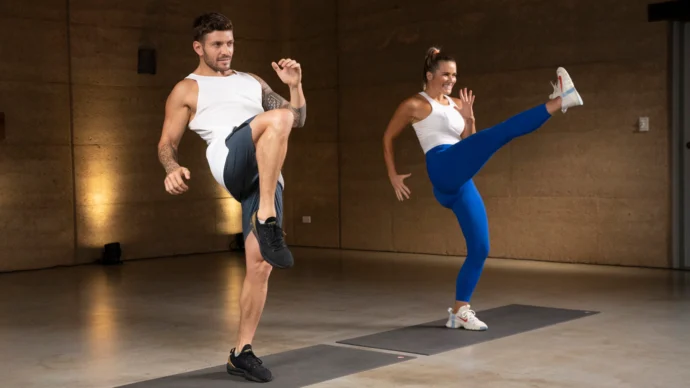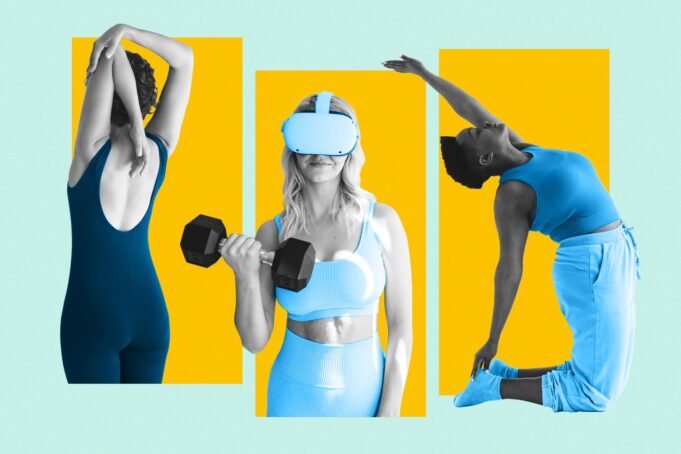The landscape of fitness is ever-evolving, continuously adapting to our changing lifestyles, technological advancements, and understanding of health and wellbeing. This year, 2024, is no exception. So, let’s dive into the top five fitness trends sweeping the globe and inspiring us to stay active, fit, and healthy.
Hybrid Training
Combining the convenience of digital fitness with the in-person experience, hybrid training has come into its own in 2024. More and more gyms offer digital memberships alongside their in-person offerings, allowing you to join that spin class or yoga session either from the gym or the comfort of your living room. The flexibility to work out whenever and wherever suits your schedule is appealing, and the ability to switch between in-person and virtual training is taking the fitness industry by storm.
Holistic Health Approach

In 2024, fitness is not just about physical health but the overall well-being of the mind and body. There seems to be a massive movement, particularly on social media, that supports everyone doing what works for the individual. Whether that’s waking up and having a turmeric latte – click here for a delicious blend – or running a marathon each month.
There’s a greater emphasis on incorporating mindfulness into exercise routines, focusing on stress reduction and mental wellness. Yoga and meditation are still popular, but now we see more fusion classes that blend high-energy workouts with mindful cooldowns. Recovery-focused classes – promoting active recovery and mobility – are increasingly sought-after as part of a balanced fitness regimen.
AI-Powered Personal Training
Artificial Intelligence (AI) has made significant strides in personalizing our fitness regimes. AI-powered fitness apps are on the rise, providing users with tailored workout plans based on their fitness levels, goals, and preferences. The technology monitors your progress, adapts exercises, and provides real-time feedback to ensure you’re performing each movement correctly. With AI trainers, you get a personal training experience at a fraction of the cost.
Outdoor Activities
In the wake of the global pandemic, outdoor activities have grown exponentially in popularity. There’s a renewed interest in hiking, trail running, open-water swimming, and even outdoor yoga. Green exercise, or exercising in natural environments, has known benefits for mental health, providing an additional reason for its surge in popularity. Fitness festivals, combining music, exercise, and wellness, are also gaining traction, offering a unique, fun approach to fitness.
Genetic-Based Training
Genetic-based training is an approach to fitness that utilizes information from an individual’s genetic makeup to personalize their exercise routine and diet. Also known as DNA-based training or precision training, this method is becoming increasingly popular due to its potential to maximize results and reduce the risk of injury.
The process begins with a DNA test – involving a saliva sample or cheek swab. This sample is sent to a laboratory – where scientists analyze specific genes associated with fitness, nutrition, and health. These may include genes linked to muscular strength, endurance, metabolism, injury risk, and recovery rate.
Once the genetic report is compiled, a customized fitness and nutrition program forms. For example, if a person’s genetic makeup indicates a natural predisposition towards strength-based activities over endurance, the training plan may favor weightlifting over long-distance running. Similarly, their nutritional plan can be tailored based on how their body metabolizes certain nutrients, helping them to maximize their performance and recovery.
Wearable Fitness Technology

Wearable fitness technology is a growing trend that’s changing the way people monitor and improve their health and fitness. These wearable devices, often linked to smartphone apps or other connected devices, provide real-time feedback on a range of physical activities and health indicators.
One of the most popular types of wearable fitness technology is the fitness tracker. Typically worn on the wrist, fitness trackers monitor aspects such as heart rate, steps taken, calories burned, and sometimes even sleep patterns and stress levels. Fitbit and Garmin are some well-known brands in this space.
A step above fitness trackers are smartwatches, which combine fitness tracking with many other features. In addition to monitoring health and fitness, smartwatches also offer capabilities like receiving notifications from your smartphone, answering calls, playing music, and using apps. Many smartwatches, like the Apple Watch and various Wear OS devices by Google, even have built-in GPS and cellular capabilities, enabling them to function independently from smartphones.
Sports watches cater specifically to athletes and outdoor enthusiasts. They offer advanced fitness tracking features like training load tracking, recovery time suggestions, VO2 max estimation, and built-in GPS and altimeter features for accurately tracking outdoor activities.
There are also smart glasses, which are less common but offer unique capabilities. They can display notifications, take photos, and some even provide augmented reality experiences.
You’ll often see athletes in the NBA and football wearing these – NBA players, in particular, seem to sport wearable technology often. At the core, it’s bringing you back into tune with your body. The accurate insights give us a better understanding of how to live healthier lives and what we might be able to change. There are some excellent cheap alternatives to some of the more expensive brands, like the Apple Watch. Amazon is one of the best places to shop for them.
High-Intensity Low-Impact Training (HILIT)

High-Intensity Low-Impact Training (HILIT) is the answer for those who want the calorie-burning benefits of high-intensity workouts without the harsh impact on joints. HILIT involves exercises that increase your heart rate but have a lower risk of causing stress injuries. Examples include swimming, rowing, cycling, and using resistance bands. It’s an ideal fitness approach for all ages and particularly beneficial for those recovering from injuries or managing joint issues.
As we continue through 2024, these trends redefine what it means to be fit. They combine cutting-edge technology with a back-to-basics approach, emphasizing personalization, holistic health, and the importance of enjoying the process of staying active. Whether you prefer a heart-pounding HILIT workout, a serene yoga session in a park, or a tailored exercise routine with your AI personal trainer, there’s a fitness trend for everyone this year. So go ahead and find your fit, and enjoy it!















